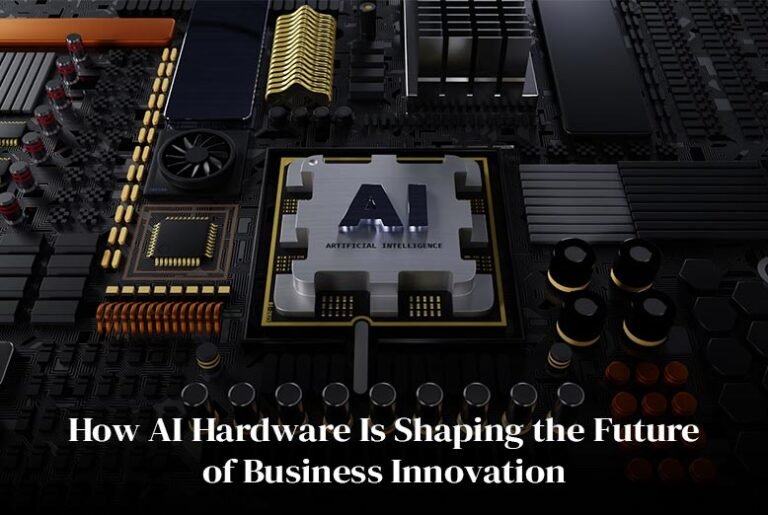No great leap in business innovation has been possible without an evolution in the tools that power it. Over the past decade, we have seen rapid growth in AI algorithms. But these advancements have hit limits, particularly in terms of latency and scalability.
Business innovation today demands a system that’s scalable and responsive to real-time needs. This is why the conversation is no longer about algorithms, but the engines behind them: AI hardware.
Specialized chips like the MI325 are allowing a new generation of AI-driven capabilities, from smarter customer support to hyper-personalized recommendations. Ultimately, this is not just about speed; it’s about how hardware is reshaping the core of AI systems across many industries. Let’s take a closer look at how AI achieves this across several industries.
1. Chatbots and Conversational AI
One of the most noticeable shifts in business-customer interactions has been driven by AI-powered chatbots. These systems handle more than answering FAQs. They can book flights, manage payroll queries, and convert leads.
But did you know that the language models that power them require serious processing to function? Hardware like MI325 accelerates transformer-based models, such as the GPT-style, for real-time conversations. There is also the edge deployment that makes it possible for chatbots to operate offline in environments where latency is critical. For instance, in:
- kiosks,
- banking terminals, or
- hospitals.
2. Real-Time Sentiment Analysis and Emotional Intelligence
Businesses now monitor thousands of tweets, reviews, and support tickets to gauge customer sentiment. For instance, fintech firms use sentiment analysis to flag unsatisfied users early, thereby reducing churn.
Specialized chips with parallel processing capabilities can analyze massive volumes of data simultaneously. This allows them to get emotional context from conversations or facial cues in videos.
3. Recommendation Systems for Personalization
The importance of personalization in customer engagement cannot be overemphasized; Netflix suggests your next binge, Amazon nudges you toward the perfect add-on, and a SaaS tool also recommends the next best action. These recommendation systems aren’t magic; they just rely on constantly evolving behavioral data.
A major challenge lies in processing this data quickly enough to serve meaningful suggestions. But with inference capabilities, customized chips can sift through large datasets, detect patterns, and adjust recommendations. Traditionally, this would mean struggling to retrain models at the pace required for modern personalization.
4. Advanced Computer Vision Applications
Vision is one of the most complex and resource-intensive areas of AI. Yet, it’s being deployed at scale across industries. Retailers are using vision systems for cashierless checkout and theft prevention.
Similarly, manufacturers rely on AI vision for defect detection and quality assurance. Logistics companies are also deploying vision-guided robots to navigate warehouses and verify inventory.
These use cases demand split-second visual inference. And only specialized AI hardware can meet this requirement. Vision-optimized chips process thousands of frames per second. They also apply models that detect, classify, or track objects immediately. Ultimately, it’s the hardware, not just the software, that allows these innovations to work.
5. Predictive Maintenance
In industrial settings, AI can predict equipment failures before they happen. Predictive maintenance relies on AI models trained on sensor data–which must be processed locally and continuously for accurate forecasting.
AI hardware processes time-series data at the edge, right where the sensors are located. Unlike traditional systems that may process this data in batches and respond hours later, edge AI hardware provides instant insights.
Whether it’s a vibration sensor on a turbine or a temperature monitor on a data center rack, an AI accelerator can collect and analyze data streams to spot issues.
6. Robotics and Autonomous Systems
Robotics is a fast-growing area in AI. For these systems to work, they must process a constant stream of sensory data and respond immediately with precise actions.
This level of responsiveness is only possible with low-latency AI hardware. These systems combine high computational power with energy-efficient designs.These machines can also handle:
- real-time localization,
- obstacle avoidance, and
- path planning without relying on cloud connectivity.
7. Threat Detection
Cyber threats are getting more serious, hence the need for intelligent defense systems. AI hardware allows threat detection models to run at the packet level. It can inspect millions of data flows across endpoints, servers, and cloud instances.
Now, with this hardware-accelerated approach, organizations can deploy AI to detect evolving suspicious behavior patterns.
Why AI Hardware Is the Backbone of Business Innovation
High-performance chips like MI325 are enabling real-time intelligence, edge computing, and scalable AI infrastructure that traditional systems can’t handle.
Here’s a recap of our guide for forward-thinking organizations:
- AI success depends on infrastructure
- Edge and real-time capabilities are key for scaling.
Also Read: A Chat with Ryan Dearlove on All Things AI



